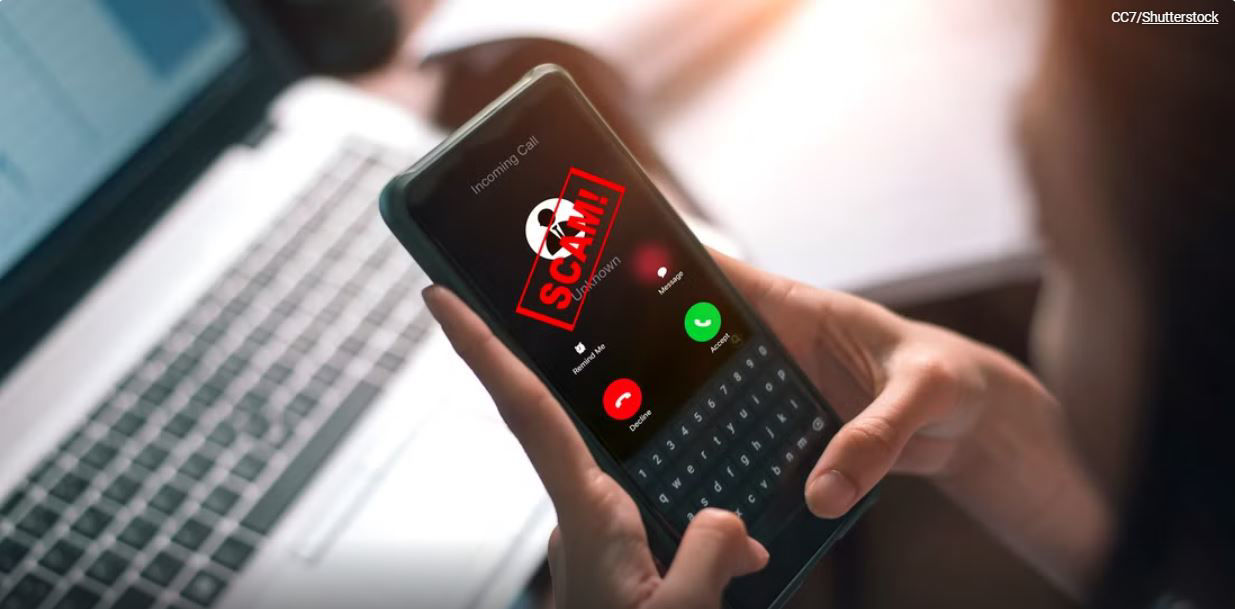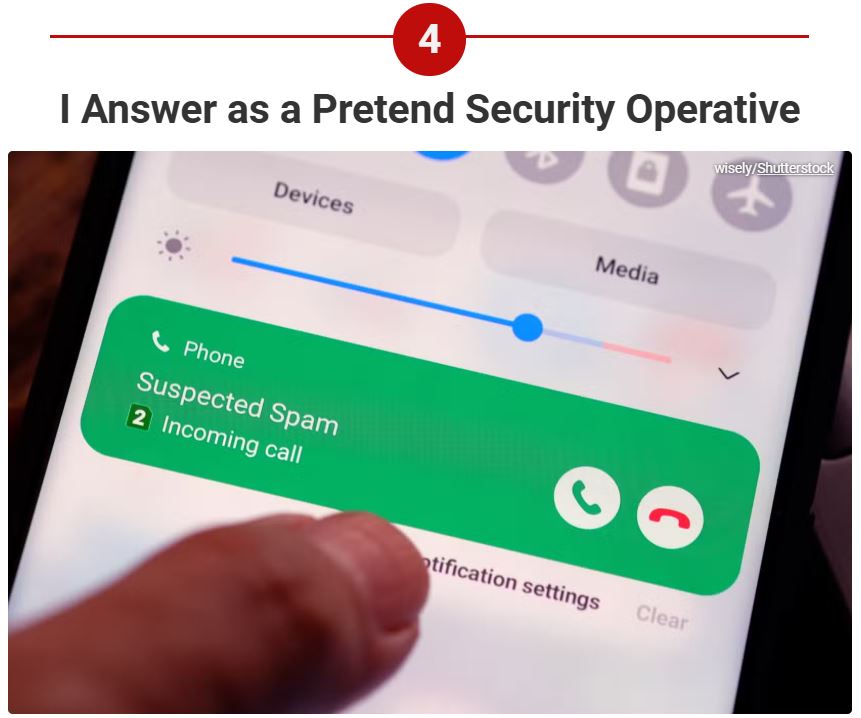5 min read//
Phone scams are everywhere, and they're getting sneakier. I've had my share of spam calls, but over time, I've learned simple tricks to avoid them.
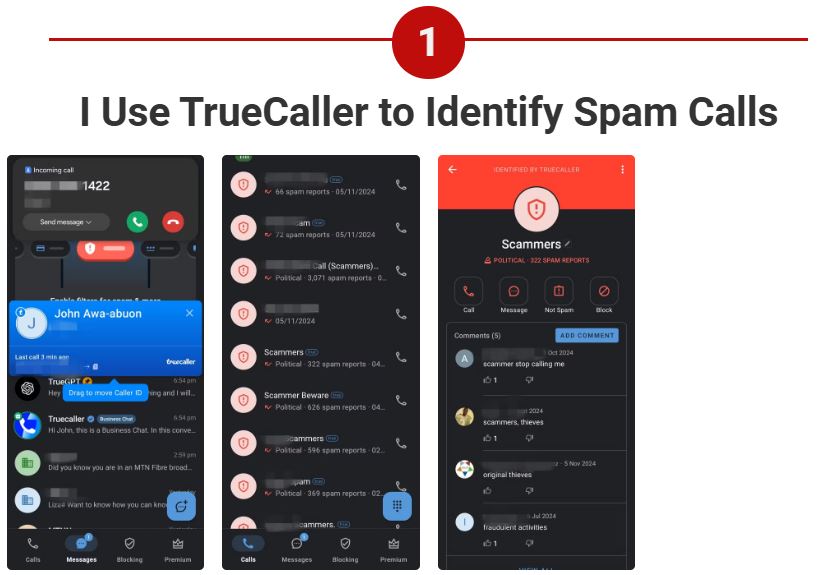
One of the easiest ways to keep scammers at bay is by using caller ID and spam-blocking apps like Truecaller, Hiya, or RoboKiller. These apps are designed to identify unknown numbers and alert you when a call is likely spam or fraudulent.
I use Truecaller, and it's made a huge difference. Anytime an unknown number calls, Truecaller checks it against its massive database of reported spam and scam numbers. If the number is flagged, I get an instant warning, usually something like "Scam Likely" or "Telemarketer." This simple heads-up has saved me from wasting time on nuisance calls or risking interaction with a scammer.
One of my favorite things about Truecaller is how easy it is to use. Blocking and reporting numbers is straightforward, and it feels good knowing that by doing so, I'm contributing to a system that helps other users avoid the same scams. It's not foolproof—occasionally, a call slips through—but it's rare enough that I don't worry much.
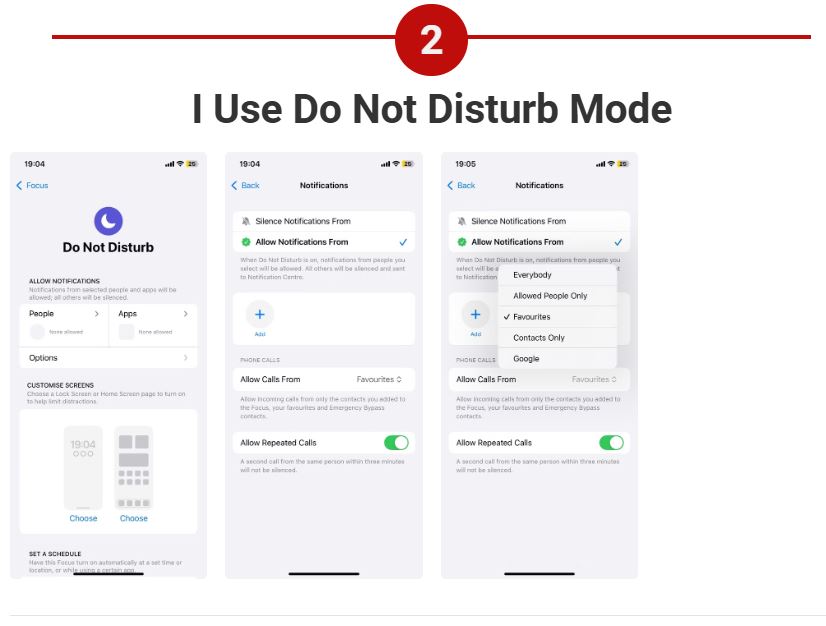
When I'm not expecting any important calls, I turn on my phone's Do Not Disturb (DND) mode. DND silences all calls, texts, and notifications except those from your contacts or starred numbers. It's proven a great way to block out spam calls entirely during specific times, like when I'm working, sleeping, or need a break.
You can customize your DND settings to match your preference iOS as well as on Android. You can set it to allow calls from your favorites list or enable repeated calls to come through (in case of emergencies).
The key to using DND is remembering to turn it off when expecting a call from an unknown number, like a delivery person or a new contact. That way, you don't miss any calls.
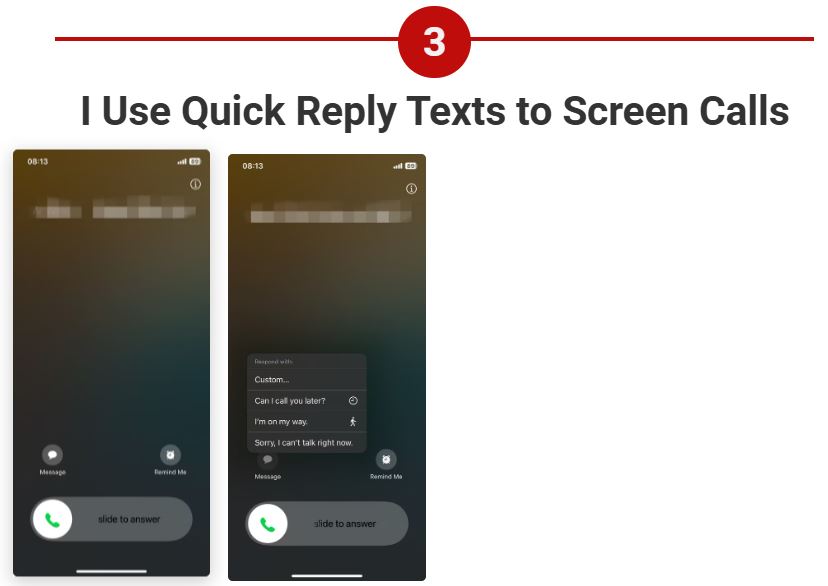
When unsure about a call but don't want to risk missing something important, I use quick reply texts to screen the caller. Most smartphones today allow you to send a pre-written message, like "Sorry, I can't talk right now," or a custom message directly from the call screen. This is a simple yet effective way to gauge whether the call is legitimate without engaging directly.
One of my more lighthearted tricks for dealing with unknown callers is pretending to be a security operative. When I'm fairly certain a call is spam, I sometimes answer with a playful tone, saying something like: "This is John with the Cybersecurity Division. How can I assist you?"
This approach is meant to be fun and not taken too seriously. It's a way to disrupt the scripted nature of scam calls and see how the caller reacts. Legitimate callers, like friends or businesses, usually laugh or clarify who they are, while scammers often hang up immediately.
That said, I'm careful to use this tactic responsibly. I never claim to be from an actual law enforcement or security agency, as this could be illegal in some jurisdictions and create unnecessary complications. Instead, I use vague, fictional titles like Cybersecurity Division to keep things light and avoid any risk of impersonation.
Thanks to these simple yet effective strategies, scam calls are a lot easier to avoid. While no method is 100% foolproof, these tricks have drastically reduced the number of unwanted calls I receive, saving me time and peace of mind.









